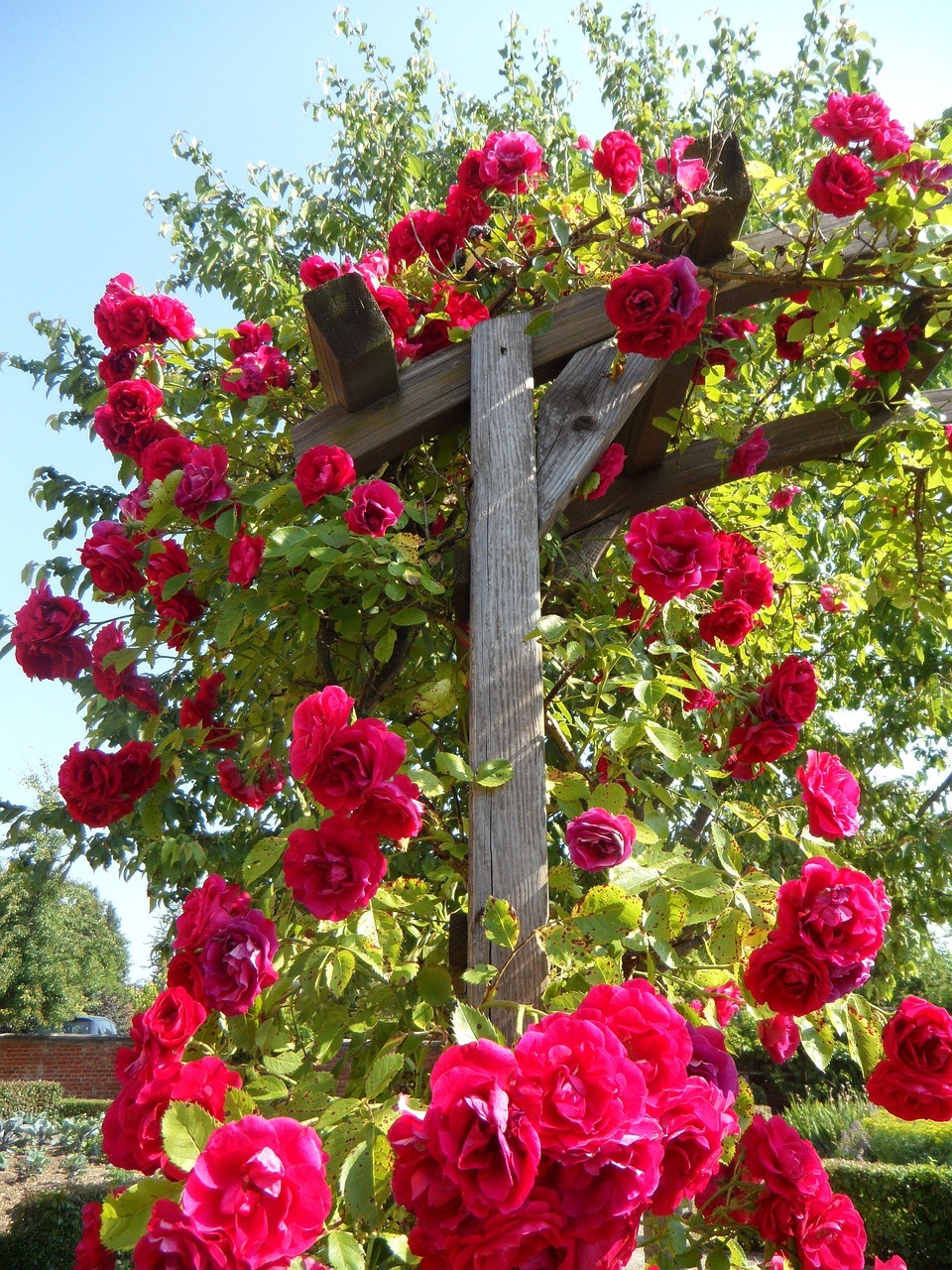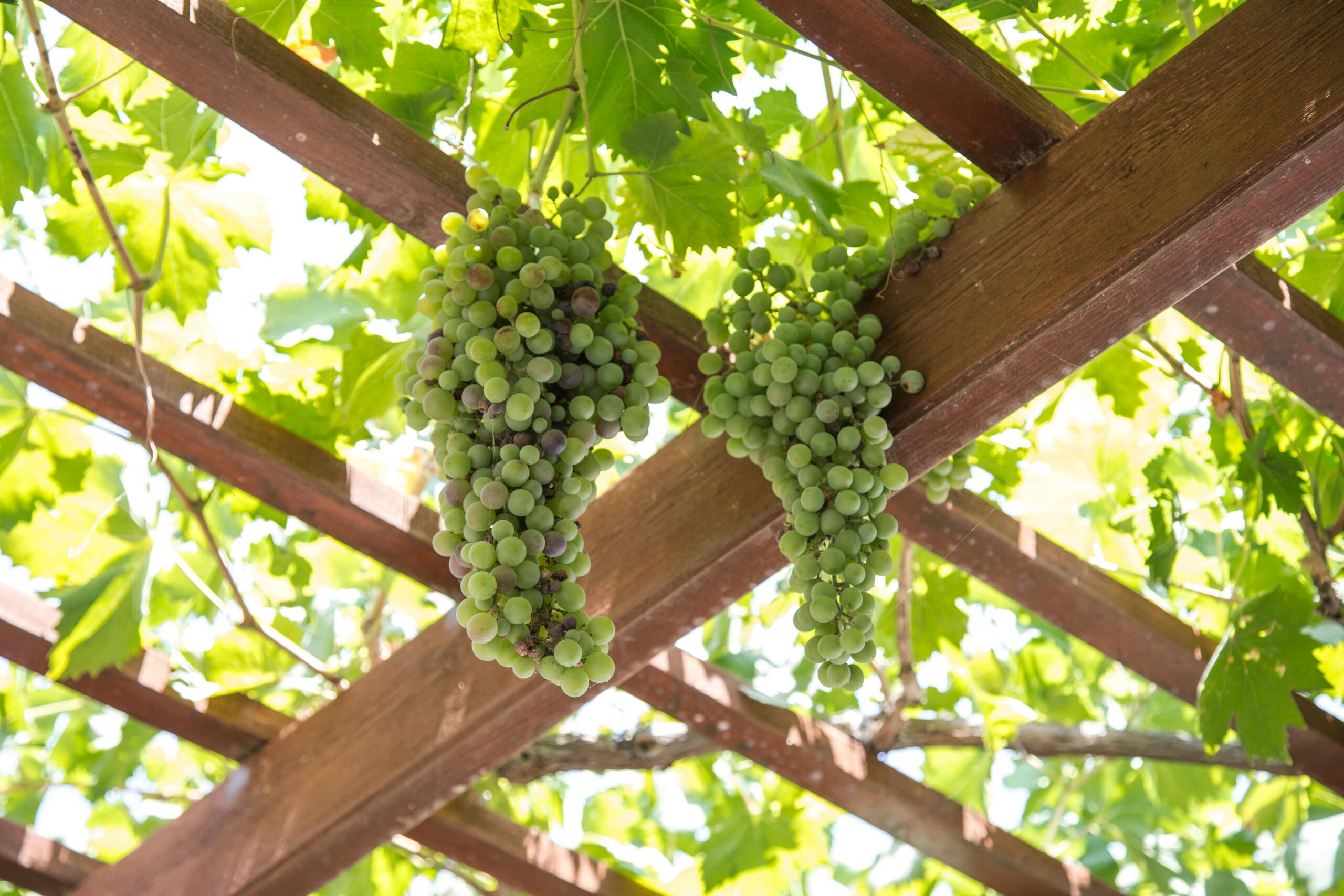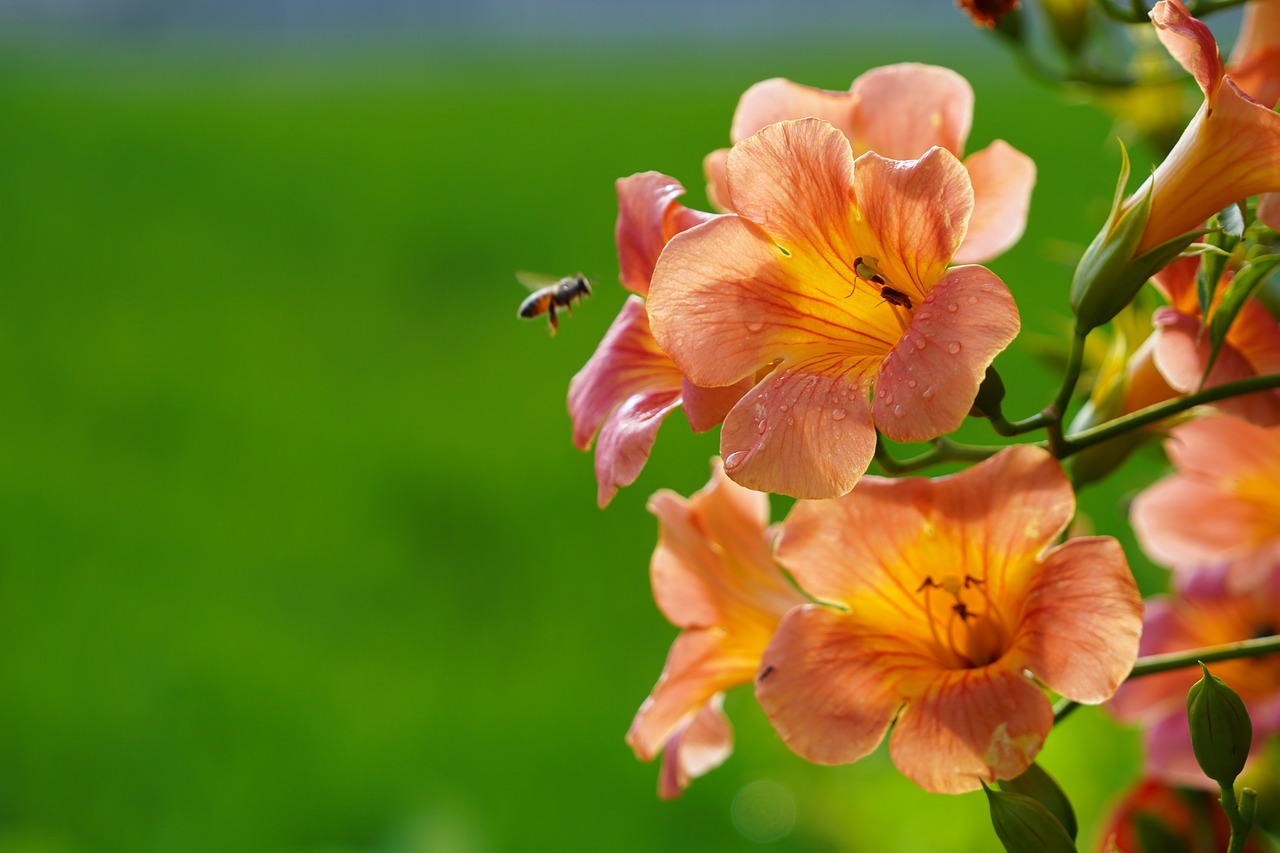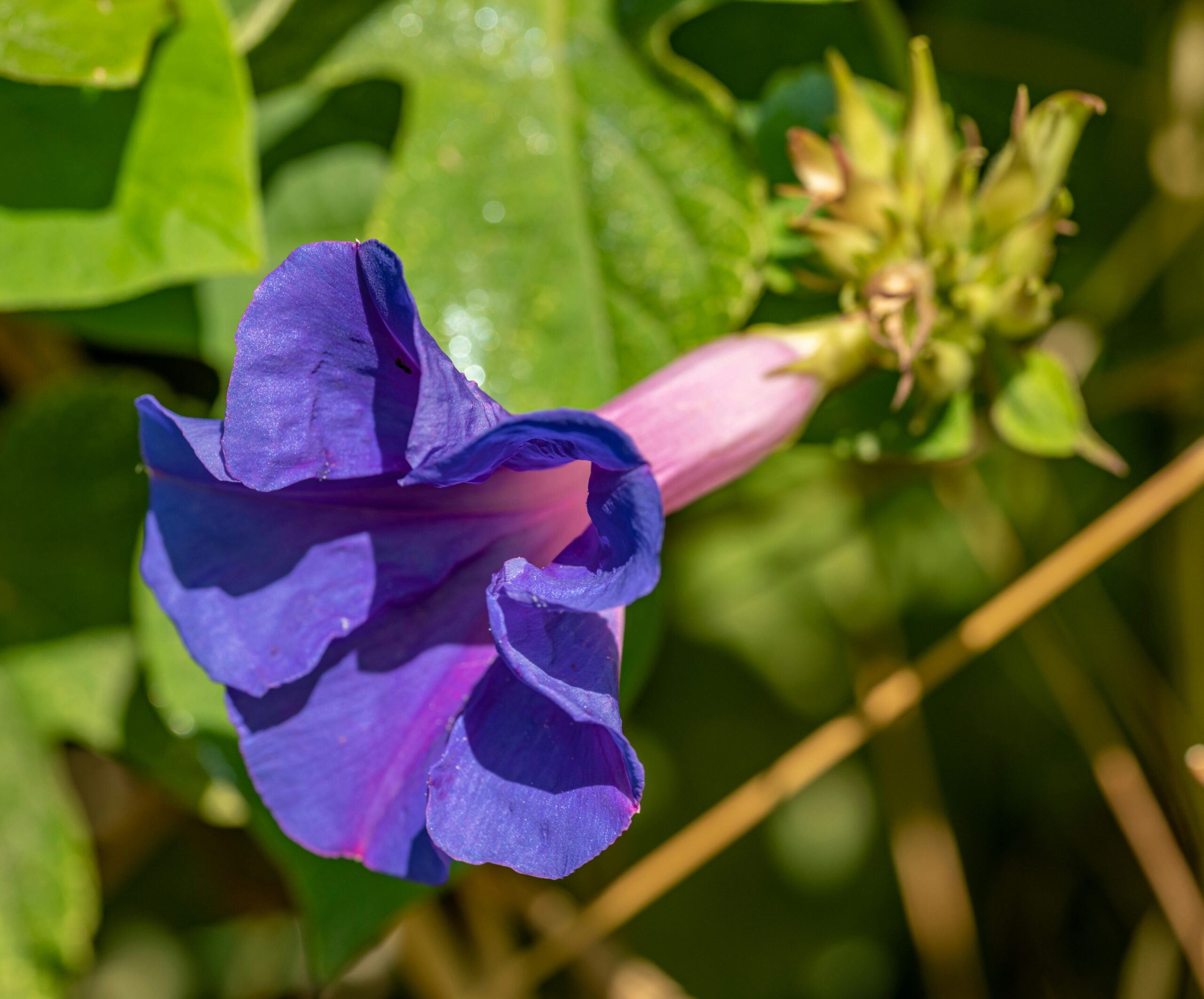You’re searching for the best climbing plants for your fence. Explore no more. Honeysuckle variants, with their vibrant flowers and hummingbird allure, thrive in diverse soils, perfect for dressing up barriers. Clematis bursts in a rainbow of colors, reaching heights of 8 to 12 feet, requiring minimal care. Climbing roses, like the New Dawn, demand full sun but reward with lush growth up to 20 feet. Grape vines stretch even further, offering decorative and edible benefits. For rapid coverage, trumpet vine and morning glory excel, with the former attracting hummingbirds with its vivid blooms. Ready to transform your fence into a living mural? There’s more to uncover.
Key Takeaways
- Honeysuckle varieties, with over 180 species, attract hummingbirds and butterflies, ideal for dressing fences.
- Clematis offers over 300 varieties and thrives with sunny exposure, perfect for adorning fences up to 12 feet high.
- Climbing roses like New Dawn grow up to 20 feet, requiring full sun and regular pruning for fence decoration.
- Grape vines, providing edible fruits, can stretch over 30 feet, adding ornamental value to fences in full sun.
- Morning glory vines, fast-growing and requiring full sun, quickly cover fences with vibrant blooms that attract pollinators.
Honeysuckle Varieties
Honeysuckle varieties, with their over 180 species, offer a rainbow of flower colors from crimson to white, attracting hummingbirds and butterflies to your garden. These vibrant, fragrant blooms don’t just add color; they bring life, turning your outdoor space into a bustling hub of nature’s beauty. Honeysuckle’s versatile nature means it thrives in various soils, making it a hassle-free choice for gardeners looking to add both charm and coverage.
Stretching 10 to 20 feet, honeysuckle vines are perfect for dressing up fences or trellises, providing ample coverage with a lush, green backdrop punctuated by colorful flowers. Imagine the transformation: a plain fence becomes a dynamic, living wall, teeming with activity as hummingbirds and butterflies flit from bloom to bloom. The fragrant blooms not only catch your eye but envelop your garden in a sweet, enchanting aroma.
Choosing honeysuckle for your garden isn’t just about aesthetics; it’s a practical, low-maintenance solution for creating privacy and enhancing biodiversity. Let this climber turn your garden fences into natural artwork, alive with color, scent, and the gentle buzz of nature’s visitors.
Popular Clematis Types
You’re about to explore the world of popular clematis types, each with its unique charm and requirements. We’ll guide you through their growth habits, pinpoint the ideal varieties for your garden, and share essential care and maintenance tips. Get ready to transform your fence into a stunning floral display with these versatile climbers.
Clematis Growth Habits
Clematis, with its over 300 varieties, showcases a dynamic range of growth habits, making it a versatile choice for fence beautification. This diverse plant thrives in a sunny location with well-draining soil, essential for its vibrant bloom production. Clematis is designed to climb structures with vigorous growth, stretching elegantly between 8 to 12 feet. Ideal for adorning fences and trellises, it offers a continuous display of beauty from spring to fall, ensuring your garden remains a spectacle throughout the growing season. Important care is essential; heavy pruning on old wood encourages a healthier plant capable of prolific blooming. Embrace clematis for its unmatched versatility and enjoy a living tapestry that evolves from spring to fall.
Ideal Clematis Varieties
When selecting the ideal clematis variety for your fence, consider vibrant options like ‘Niobe’ and ‘Jackmanii’ for their stunning blooms and robust growth. ‘Niobe’ captivates with deep red blooms paired with contrasting yellow stamens, while ‘Jackmanii’ offers a display of rich purple flowers that adorn your fence from mid to late summer. For those who fancy softer hues, ‘Nelly Moser’ presents large, soft pink flowers with distinctive carmine midstripes and yellow stamens. If a burst of velvety purple-blue appeals to you, ‘The President’ clematis delivers profuse blooms in early summer and a repeat show in early fall. To conclude, ‘Ville de Lyon’ adds a striking pop with its vibrant carmine red flowers and creamy yellow stamens, making any fence a focal point.
Care and Maintenance Tips
To guarantee your clematis varieties like ‘Nelly Moser’ and ‘Jackmanii’ flourish, regular pruning and proper watering are essential. Climbing clematis requires dedicated care and maintenance to showcase their vibrant blooms. Here’s how:
- Prune early in the spring to promote healthy growth and flowering.
- Ensure they receive adequate water, especially during dry spells, but avoid waterlogging.
- Plant in a spot that enjoys full sun to part shade, depending on the variety, like ‘Henryi’ which thrives in both.
- Mulch around the base to retain moisture and keep roots cool.
- Support their climbing habit with trellises or fences to encourage upward growth.
Choosing Climbing Roses
If you’re aiming to add a touch of elegance to your fence, consider choosing climbing roses like New Dawn or Zephirine Drouhin. These varieties are not just visually stunning; they’re also enchanting climbers that can transform any ordinary fence into a blooming garden showcase. Climbing roses thrive in full sun and well-draining soil, conditions that allow them to grow vigorously and bloom profusely.
When planting climbing roses, remember they’re not just confined to fences. They’re equally mesmerizing when draped over trellises, pergolas, or even along the side of a house, reaching impressive heights of 10 to 20 feet. However, their beauty and growth aren’t purely by chance. Regular pruning is a must to maintain their shape and encourage blooming throughout the season.
Growing Grape Vines
After exploring the beauty of climbing roses, let’s turn our attention to the practical and picturesque option of growing grape vines on your fence. Grape vines, like Concord, Niagara, and Delaware, aren’t just for vineyards; they can transform your fences into lush, green barriers that not only provide shade but also reward you with delicious, edible fruits.
Here’s why you should consider grape vines for your fencing:
- Full Sun Exposure: Grape vines thrive in full sun, making them perfect for that sunny spot where other plants might struggle.
- Ample Space for Growth: With the ability to stretch over 30 feet, these vines make excellent use of the vertical space your fence provides.
- Edible Fruits: Imagine plucking fresh Concord grapes right from your fence. It’s a delightful way to enjoy home-grown produce.
- Ornamental Value: Beyond their practical food production, grape vines add an ornamental flair to your landscaping, especially when trained properly along fences.
- Versatile and Functional: These vines offer a unique blend of aesthetics and functionality, making your fence a focal point of both beauty and bounty.
Trumpet Vine Care
Taking care of your trumpet vine guarantees it stays a vibrant and flourishing feature on your fence. This fast-growing climber, with its spectacular orange and red flowers, can shoot up to 30 feet tall, transforming any fence into a living piece of art. Ensuring your trumpet vine receives full sun exposure is essential. These plants thrive in the sunlight, which fuels their vigorous growth and the production of those vivid blooms.
Regular watering is another key element. While trumpet vines are relatively hardy, maintaining moist soil, especially during dry spells, will keep them healthy and encourage lush growth. However, be careful not to overwater, as this can lead to root issues.
Morning Glory Guide
You’re about to transform your fence into a vibrant display with Morning Glory. We’ll explore the different varieties, offer planting and care tips, and show you how they can attract wildlife to your garden. Get ready for a cascade of color that’ll make your fence the envy of the neighborhood.
Morning Glory Varieties
Among the myriad of climbing plants, Morning Glory varieties stand out for their vibrant colors and rapid growth, transforming your fence into a blooming showcase. Here’s why they’re a top pick:
- Fast-growing: These annual vines can shoot up 6 to 10 feet in just one season.
- Vibrant colors: Available in pink, blue, and purple, they add a lively splash to your garden.
- Trumpet-shaped flowers: These blooms open in the morning, attracting bees and butterflies.
- Full sun lovers: Morning Glories thrive in well-draining soil and full sun.
- Transformative: Quickly cover a fence, turning it into a colorful garden feature.
Embrace Morning Glory varieties and watch your fence come alive with a cascade of color and life.
Planting and Care Tips
To guarantee your morning glories thrive, it’s crucial to plant them in well-draining soil and provide ample sunlight. These fast-growing annual vines are a perfect choice for quickly covering fences with lush foliage and vibrant flowers. Here’s a quick guide for planting and care:
| Aspect | Requirement | Tips |
|---|---|---|
| Sun Exposure | Full Sun | Ensures vibrant blooms |
| Watering | Regular | Keeps vines healthy |
| Soil | Well-draining | Prevents root rot |
Attracting Wildlife Benefits
Morning Glory vines not only enhance your garden’s aesthetics but also attract hummingbirds and butterflies with their vibrant blooms.
- Fast-Growing: These annual vines quickly cover fences, creating a lush, flowering barrier in no time.
- Brilliant Blooms: Their flowers unfurl in the morning sunlight, offering daily surprises of vibrant colors.
- Wildlife Haven: The abundance of blooms attracts a lively buzz of wildlife, enriching your garden ecosystem.
- Thrives in Full Sun: Perfect for sunny spots, they bask in full sun, ensuring maximum flowering and wildlife attraction.
- Ample Coverage: With lengths of 6 to 10 feet, they provide enough greenery to transform any fence into a natural work of art.
Pipevine Selections
Selecting the appropriate pipevine variety can significantly enhance your garden’s visual appeal and biodiversity. These climbing plants are not only about their distinctive flowers, which resemble curved pipes; they are also an essential larval food source for the pipevine swallowtail butterfly. By integrating pipevines, you are not just improving the beauty of your space but also welcoming these magnificent butterflies to thrive.
Furthermore, pipevines act as a refuge for pollinators such as bees and ants, alongside beneficial insects, playing a pivotal role in nurturing a healthy ecosystem right in your backyard. Their capacity to stretch over 20 feet makes them an exceptional choice for covering fences or embellishing trellises, offering a natural and lush backdrop that is both functional and appealing.
These vines are particularly versatile, flourishing in partly shady areas with ample moisture. This adaptability guarantees that you can discover a suitable spot for them in your garden, irrespective of its specific conditions. By opting for pipevines for your fences, you are not just choosing a plant; you are investing in a vibrant, living ecosystem that supports a multitude of life forms.
Attracting Wildlife
By incorporating climbing plants like honeysuckle and clematis into your garden, you’ll not only enhance its beauty but also attract a vibrant array of wildlife, from hummingbirds to beneficial insects. These climbers serve as nature’s magnets, drawing in a host of creatures that add life and movement to your outdoor space.
- Honeysuckle beckons hummingbirds and butterflies, turning your garden into a fluttering paradise.
- Clematis blooms in a spectrum of colors, each one a beacon for bees and other pollinators seeking nectar.
- Grape vines do double duty, providing cool shade and edible fruits that birds and small mammals can’t resist.
- Trumpet vines, with their bold hues, are irresistible to hummingbirds, ensuring these vibrant visitors grace your garden.
- Morning glory offers up brilliant blooms that are a hit with bees and other beneficial insects, enhancing garden health and pollination.
Embracing these climbing plants not only beautifies your fences but also establishes a thriving ecosystem right in your backyard. You’ll enjoy the lively interaction of birds, butterflies, and pollinators, all while contributing to the health of your local environment.
Frequently Asked Questions
What Is the Best Climbing Plant for a Fence?
You’re seeking the perfect climbing plant, so consider Clematis varieties for their vigor, Trumpet vine’s rapid growth, Honeysuckle’s charm, Ivy’s elegance, Wisteria’s blooms, Jasmine’s fragrance, Morning glory’s brightness, Passion flower’s uniqueness, or Bougainvillea’s beauty.
What Is the Fastest Growing Plant to Cover a Fence?
You’re looking for the fastest-growing plant to cover your fence? Morning Glory vines are your go-to. They thrive in full sun, aren’t picky about soil, and with minimal care, they’ll quickly transform your fence.
What Is a Fast Growing Vine to Cover a Fence?
You’re looking for a fast-growing vine to cover your fence. Consider vine training techniques, seasonal growth patterns, and maintenance needs. Choose based on sunlight, soil compatibility, privacy, wildlife attraction, aesthetic, and climate adaptability.
What Is the Best Plant to Cover a Fence Quickly?
For quick fence coverage, consider decorative ivy or perennial blooms. Fragrant jasmine and sun-loving bougainvillea thrive in light, while shade-tolerant hydrangea and evergreen clematis last year-round. Wildlife-friendly honeysuckle and low maintenance wisteria also enhance privacy.
Conclusion
You’ve now explored the world of climbing plants, from the sweet-smelling honeysuckle to the vibrant morning glory. Whether it’s the elegant clematis, hardy climbing roses, fruitful grape vines, the bold trumpet vine, or the unique pipevine, there’s a climber for every fence. By choosing the right one, you’ll not only beautify your space but also attract an array of wildlife. Remember, the secret to a lively garden lies in selecting the perfect climbers that thrive in your environment.








